
Find Your Flow
Combining breath and fluid movement to re-connect to you and your practice.
By Ami Norton
There are times in life when we feel a little stuck – in habits, thought patterns, and sometimes in our yoga practice too. This sequence combines variations of poses you know and love into a fluid flow. It’s designed to bring lightness and playfulness to your practice, and give your body and mind something new to explore – a great way to awaken creativity and open up to new perspectives. The flow includes typical movements from Inside Flow – a yoga style with an evolutionary approach to vinyasa.
This sequence celebrates the connection between breath and movement, using each inhale to expand and each exhale to contract the body. Try practicing the poses individually first, holding for 3 to 5 breaths before transitioning to the next. Once you feel comfortable, you can combine them fluidly, with each pose and transition matching an inhale or exhale. Here, the transitions are just as important as the poses, so take your time and focus on flowing with the breath. As you dive deeper into your flow, the movements will begin to melt into one another so there’s no beginning and no end – like moving through a bathtub of honey. The more often you practice, the easier it becomes to immerse yourself in that flow state – suspended in time, connected to your body, your breath, and yourself.
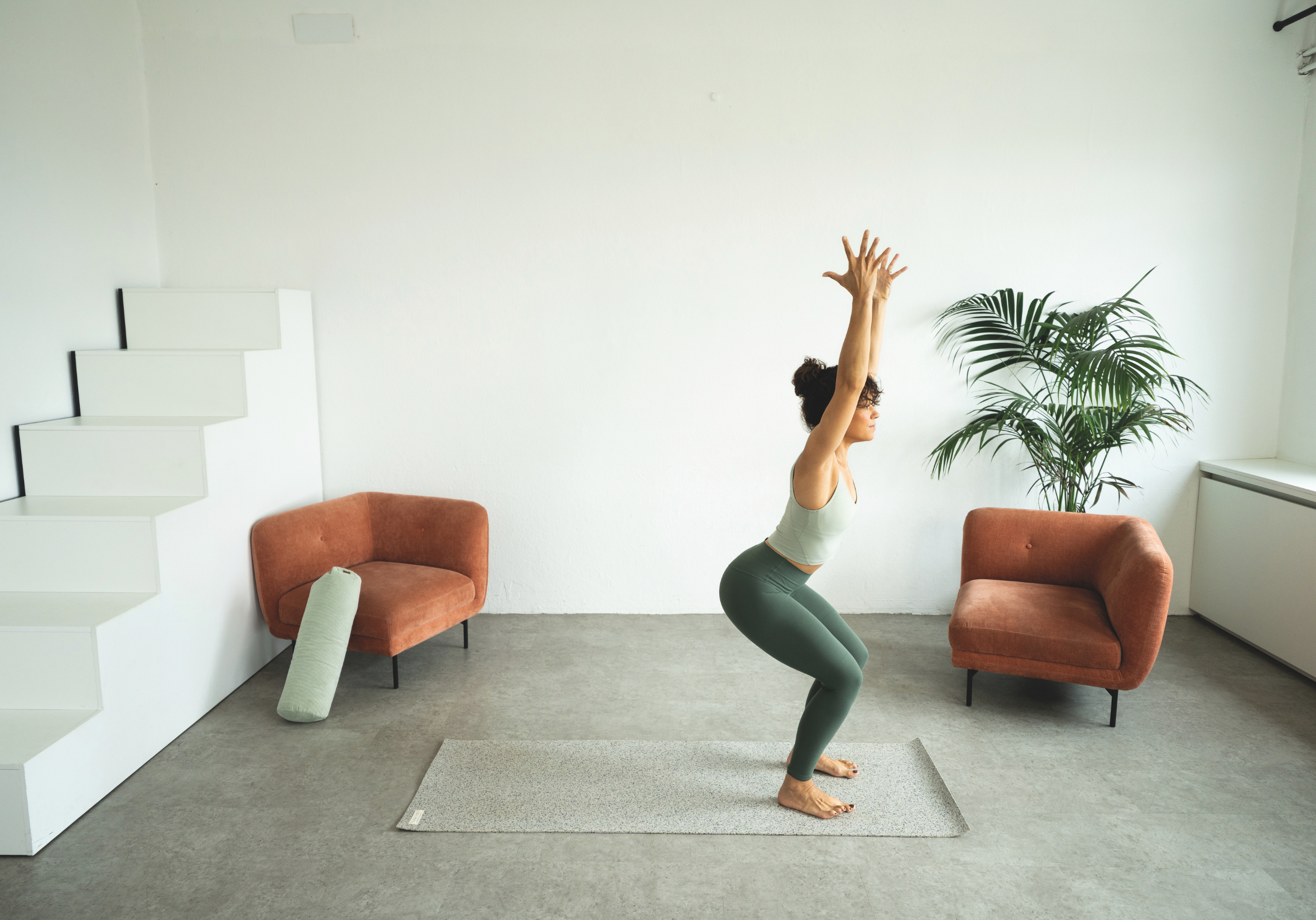
Pose 1: Chair Pose (Utkatasana)
Begin standing at the front of your mat with your feet hip-width apart. Swim the arms back and up as you sit the hips down low into Chair Pose. As you ground down through the feet, feel the activation in your legs and glutes. This variation also focuses on opening the chest and lengthening the abdomen, expanding into the front body to support the inhale breath.
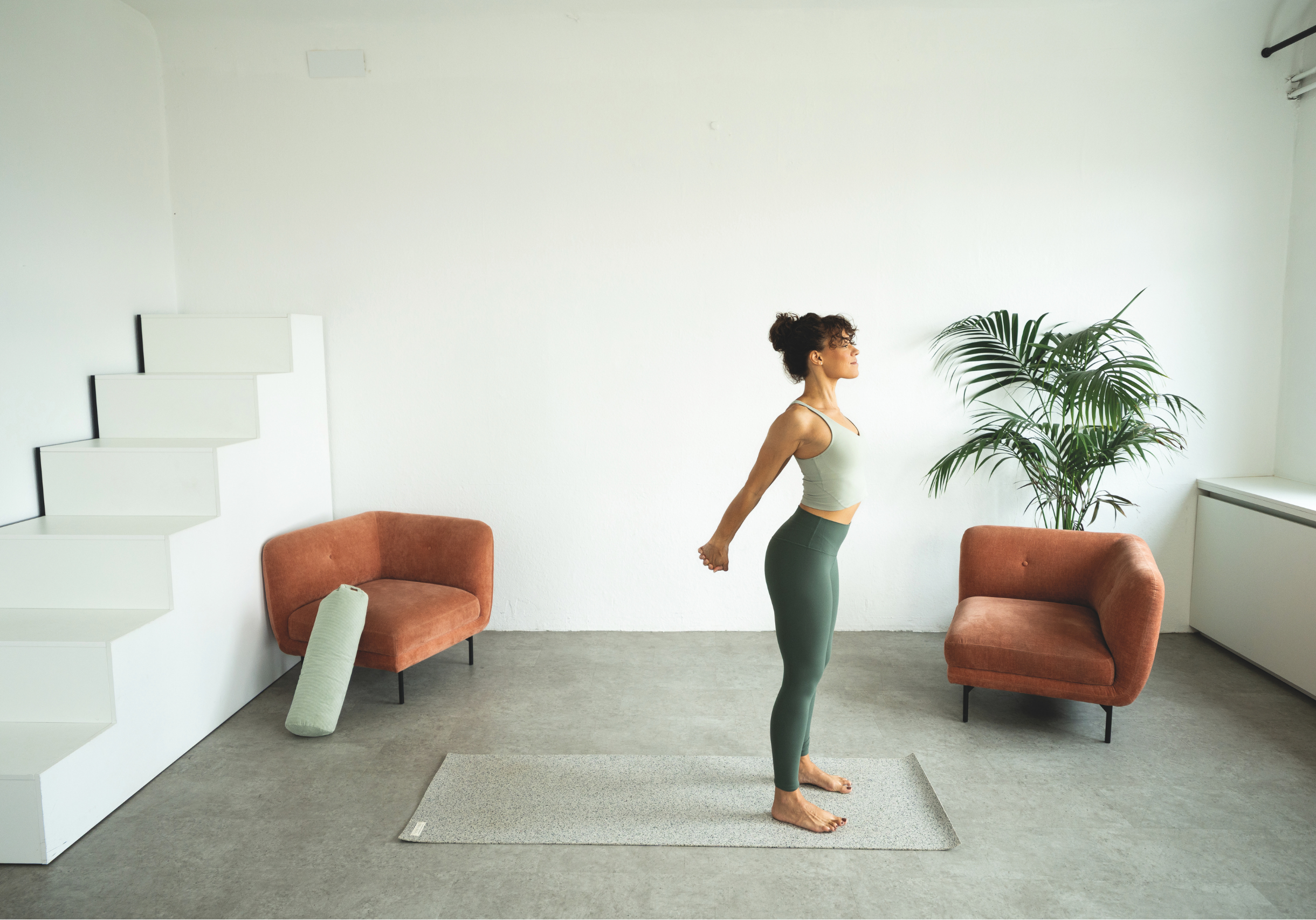
Pose 2: Mountain Pose Variation (Baddha Hasta Tadasana)
Use the exhale to interlace your hands behind your back, bending the elbows as you do. With the inhale, lengthen up through the spine, roll the shoulders back, and lift the chest. You can then straighten the arms if that feels good. Try extending them back and up (rather than down towards the buttocks) for a more spacious chest opening. As you press down through the feet, lift the heart – open and expansive.
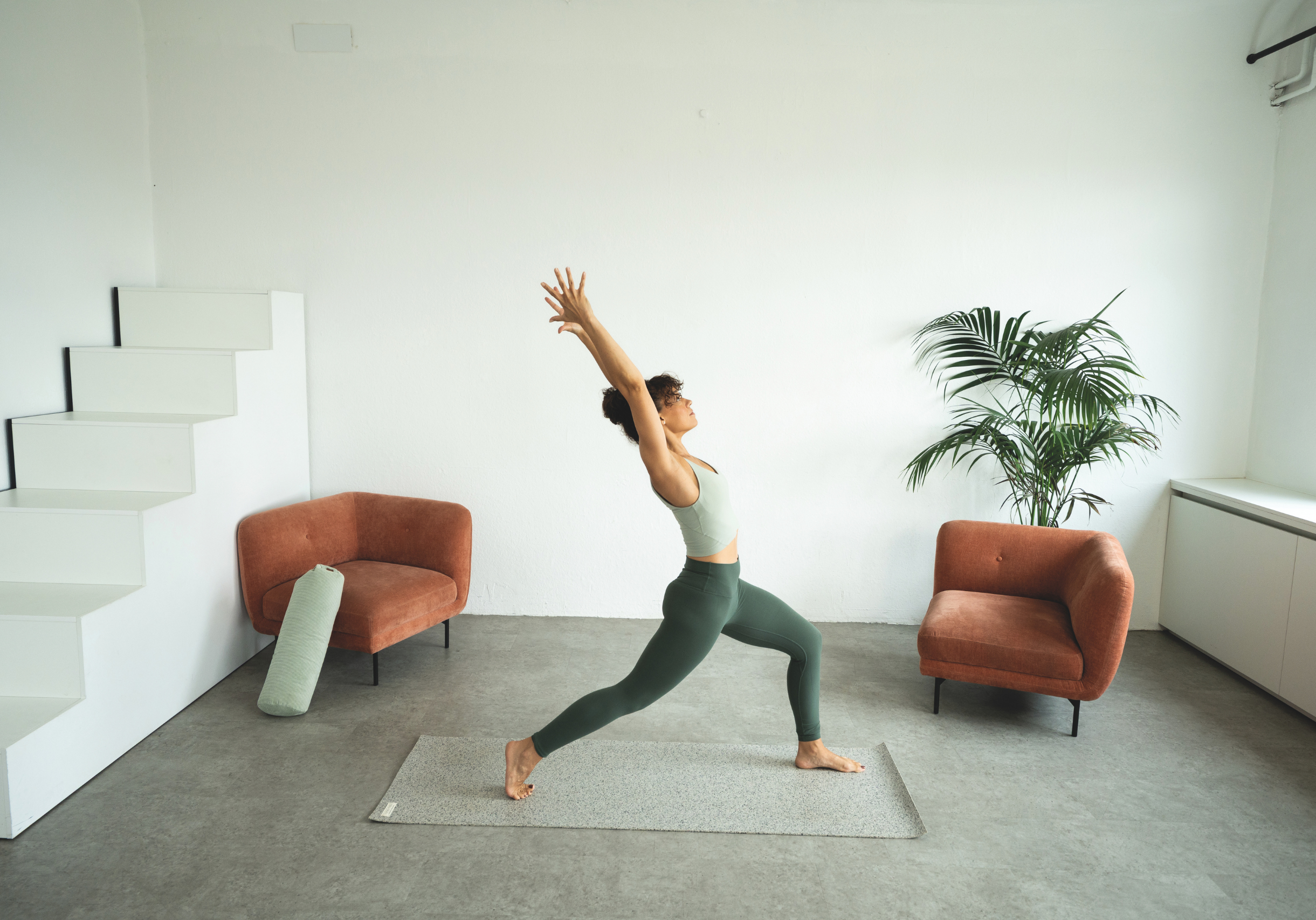
Pose 3: High Lunge (Anjaneyasana)
From the front of your mat, take a big step back as you exhale. Then circle the arms back and up into High Lunge on the inhale. Lift the back heel and pull both feet toward one another for a strong, stable base. Lift and lengthen the torso up from the pelvis as you roll the shoulders back, expanding through the chest.
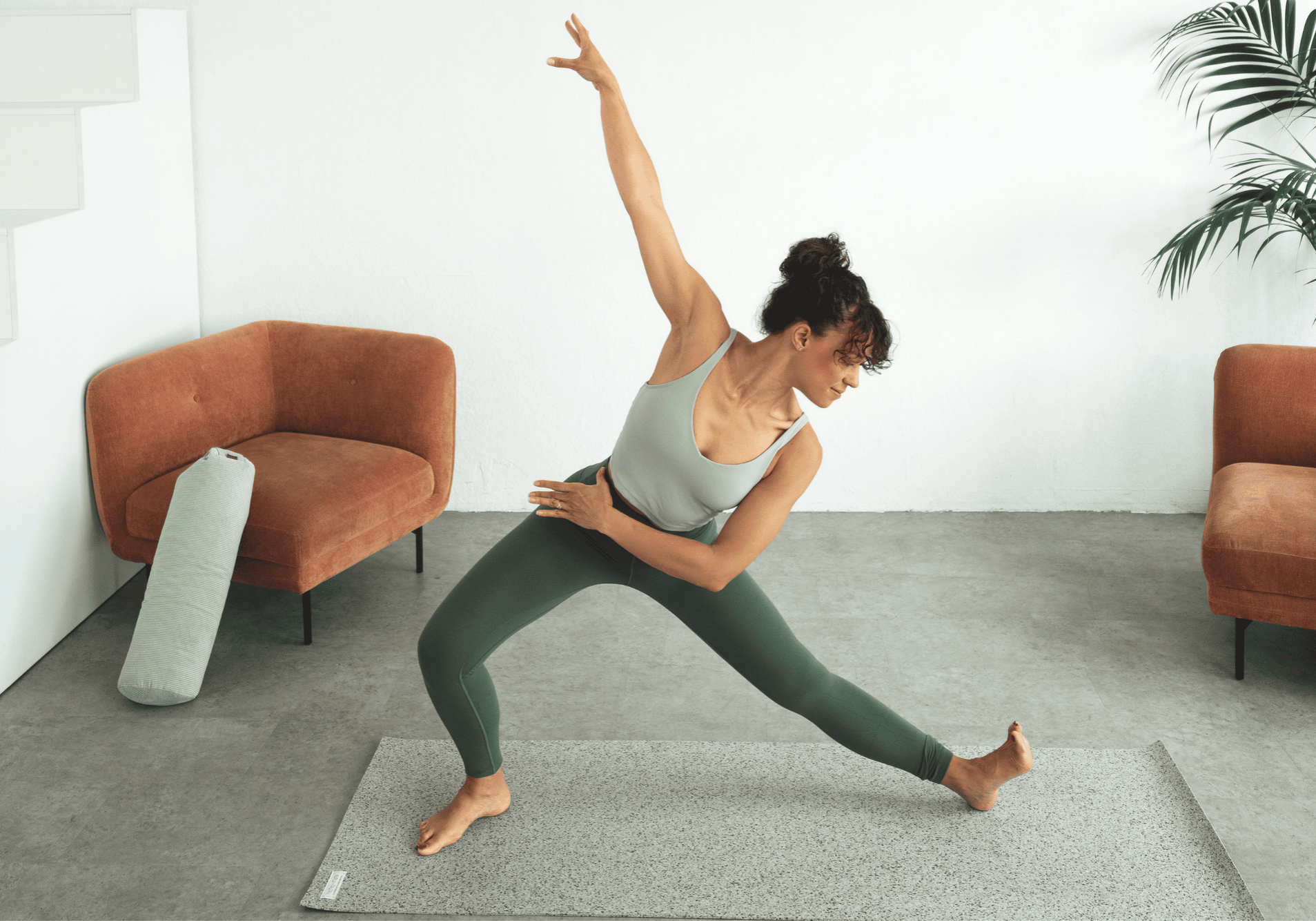
Pose 4: Rainbow Warrior (Skandasana Variation)
From High Lunge, use the exhale to place the back heel down and send your hips toward the back of the mat into a higher variation of Skandasana. The front leg straightens as you bend the back leg, turning the back foot out slightly. Press down through the back heel to stabilise as you drop the hips back and down. Feel into the playfulness of the pose as the arms swing toward the back of the mat, bringing momentum and flow to the movement as you look toward the front of the mat.
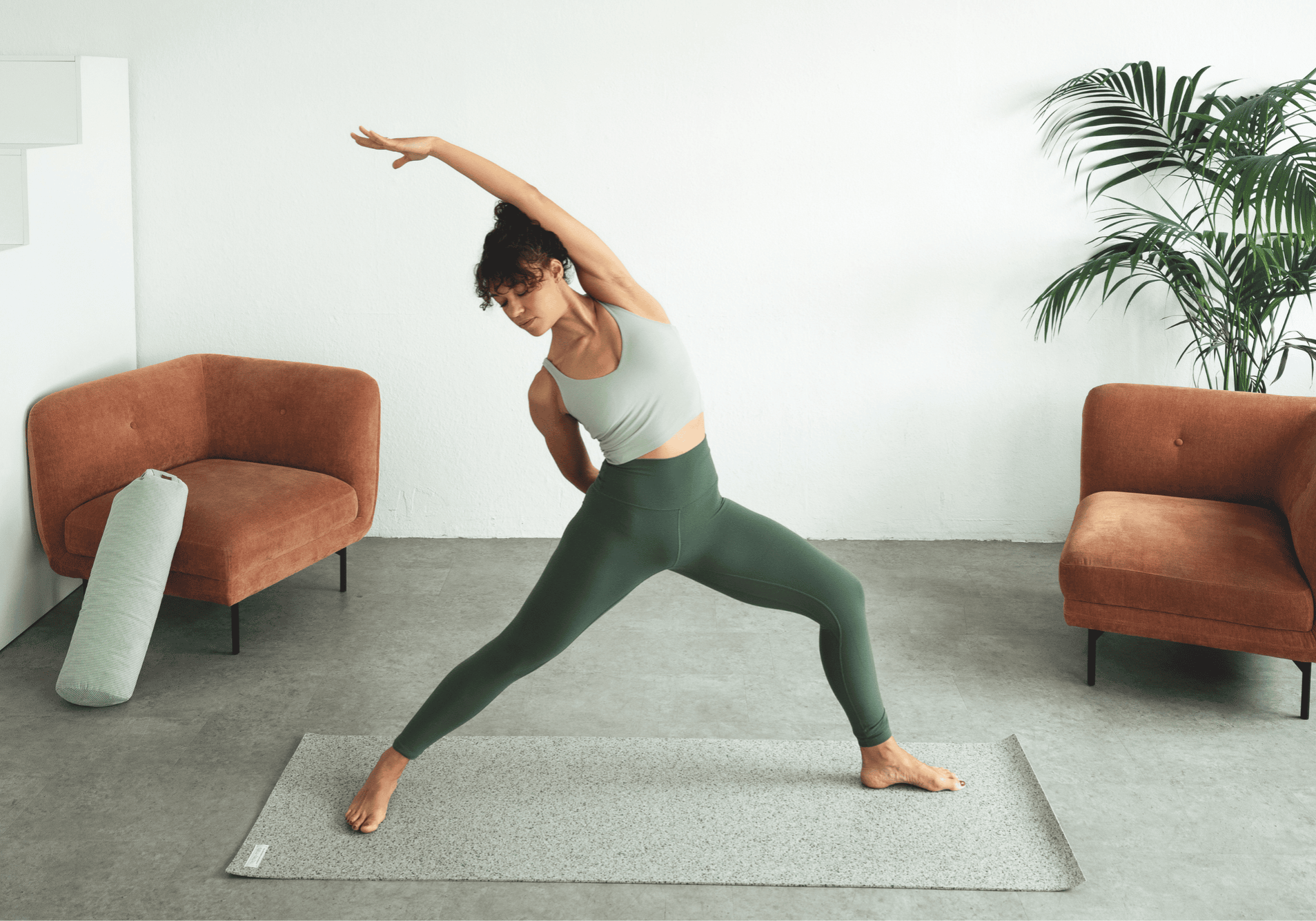
Pose 5: Reverse Warrior (Viparita Virabhadrasana)
Circle the arms forward and up to flow into Reverse Warrior. The front knee is bent, and the back leg is straight as the upper body lengthens and side bends toward the back of the mat. The top arm reaches up and over, while the bottom arm can rest weightlessly on the back leg or fold behind the back. Expand and lengthen both sides of the torso as you side bend. You can turn the gaze to the back foot for more length and lightness in the neck.
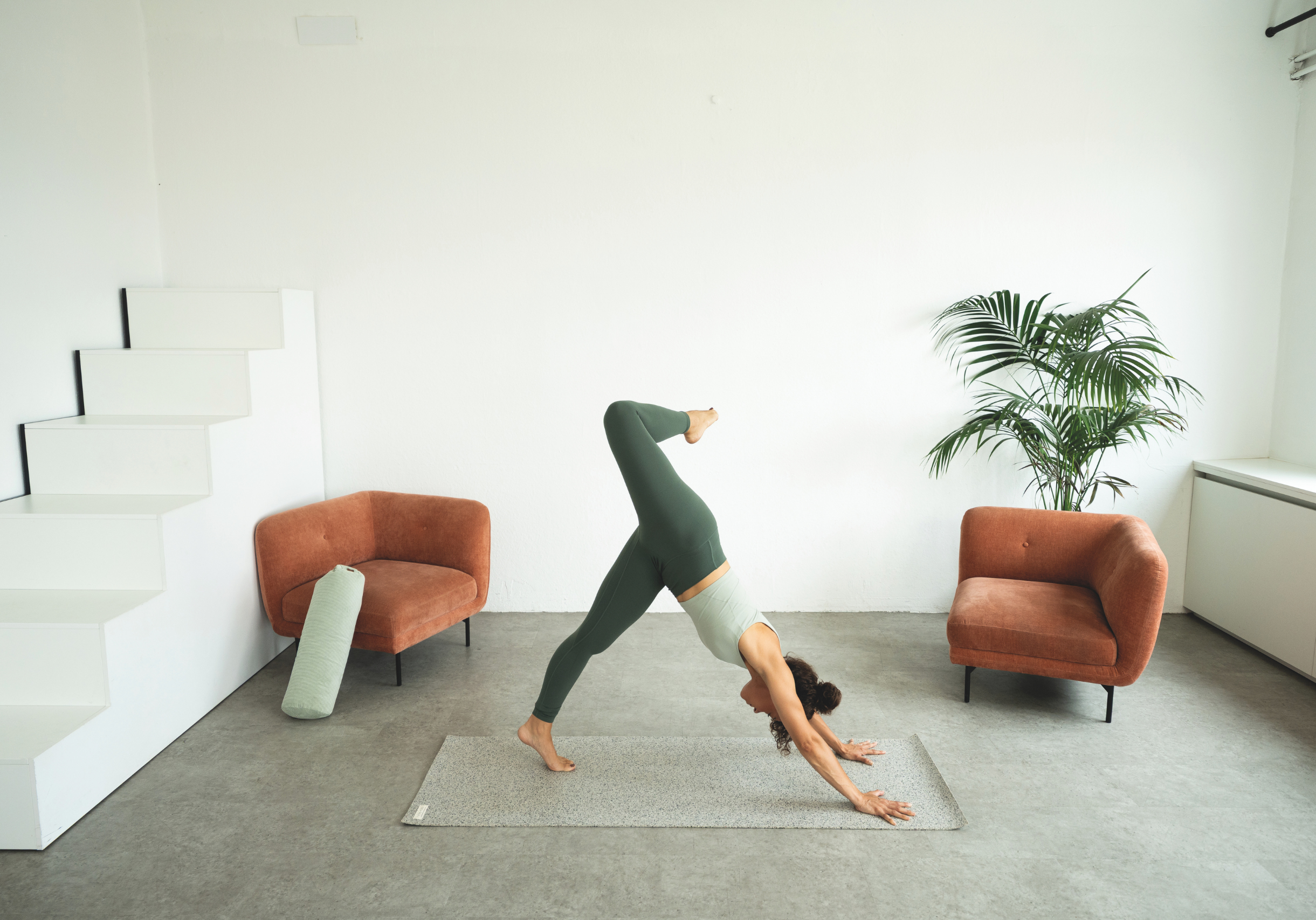
Pose 6: Three-Legged Down Dog (Tri Pada Adho Mukha Svanasana)
Bring the hands down to frame the front foot with the exhale, then lift the front leg back and up into Three Legged Down Dog. In this variation, you can open the hip and bend the top knee, creating space through the side body and opening the hip flexors. Lift the heel of the standing foot to create more space and avoid collapsing into the closed side. This also supports smoother transitions in and out of the pose.
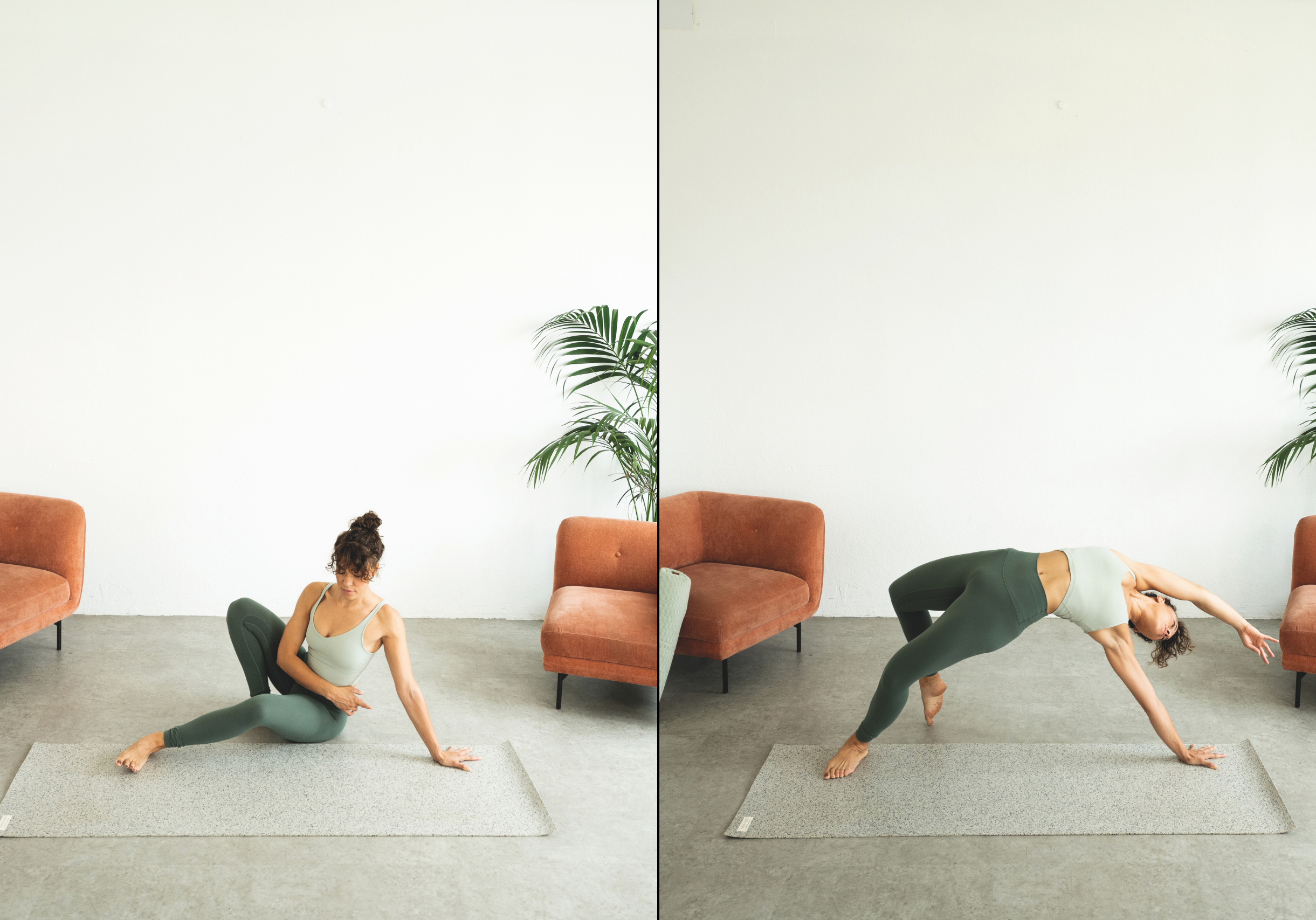
Pose 7 & 8: Wild Thing Prep to Wild Thing (Camatkarasana)
From Three-Legged Down Dog, use the exhale to slowly sit your hips down beside your mat, bending the supporting leg as you lower – Wild Thing Prep. Before lifting into your Wild Thing, roll back the shoulder of the (soon-to be) supporting arm, rotating the arm outward and opening the chest. Now, as you inhale, push the hips forward and then up, driving down through the supporting foot to lift into your Wild Thing. Keep externally rotating the supporting arm as you open the chest. The supporting leg can stay bent as you activate your glutes and upper back to expand and shine in your Wild Thing.
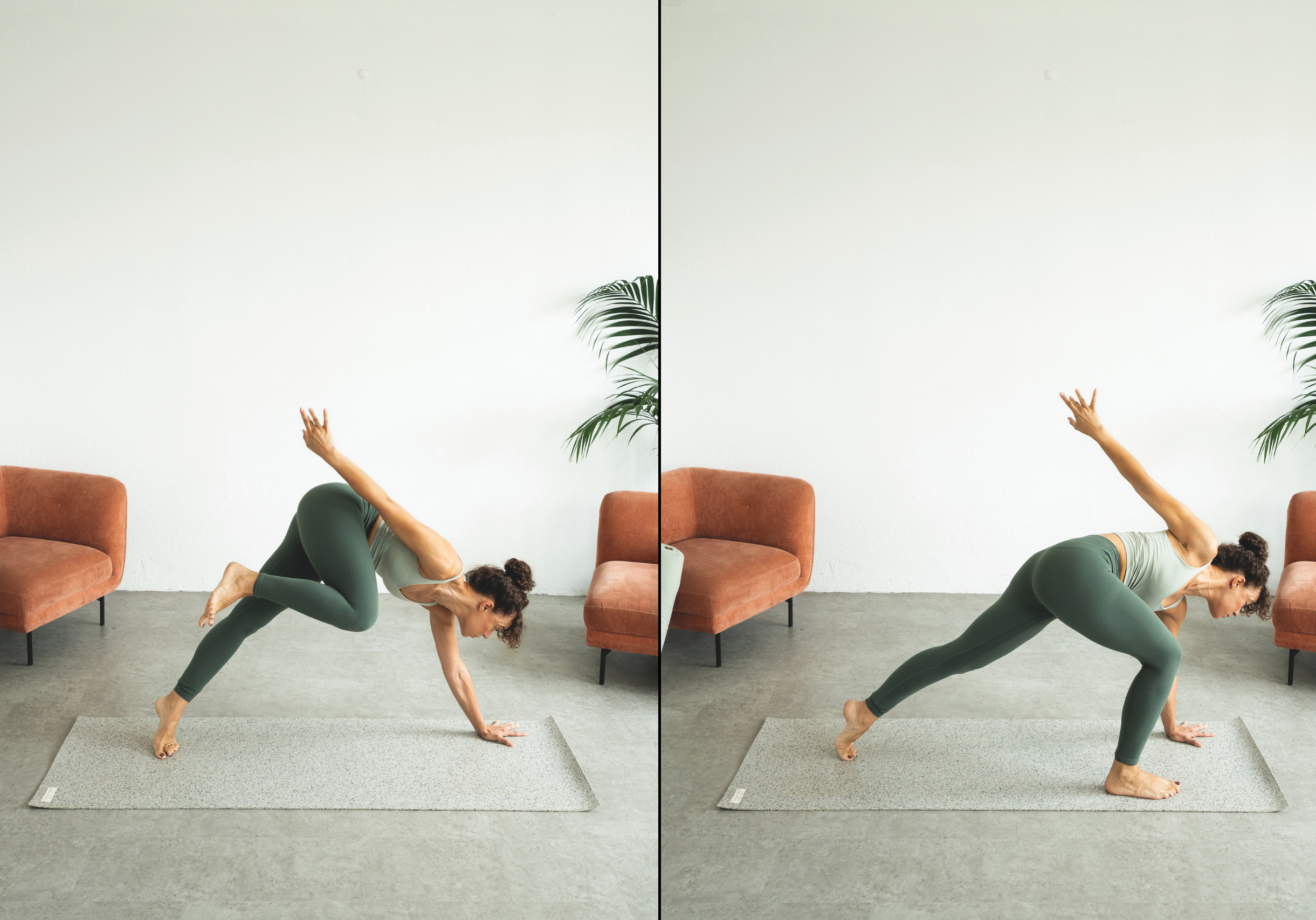
Pose 9: Power Ranger (Utthita Ashwa Sanchalanasana Variation)
Now, this is a transition you might be tempted to rush. But instead, take your time and imagine you’re moving through a tub of honey. First, transition your weight back toward the mat. Now, lift the back leg, bring the pelvis up high, and pull the knee up toward the upper armpit, then forward toward the chest to gently place the foot down in a lunge. This transition can feel wobbly at first, but with practice, you’ll gain more control, allowing you to move with power and grace – like slow motion. It’s not called Power Ranger for nothing.
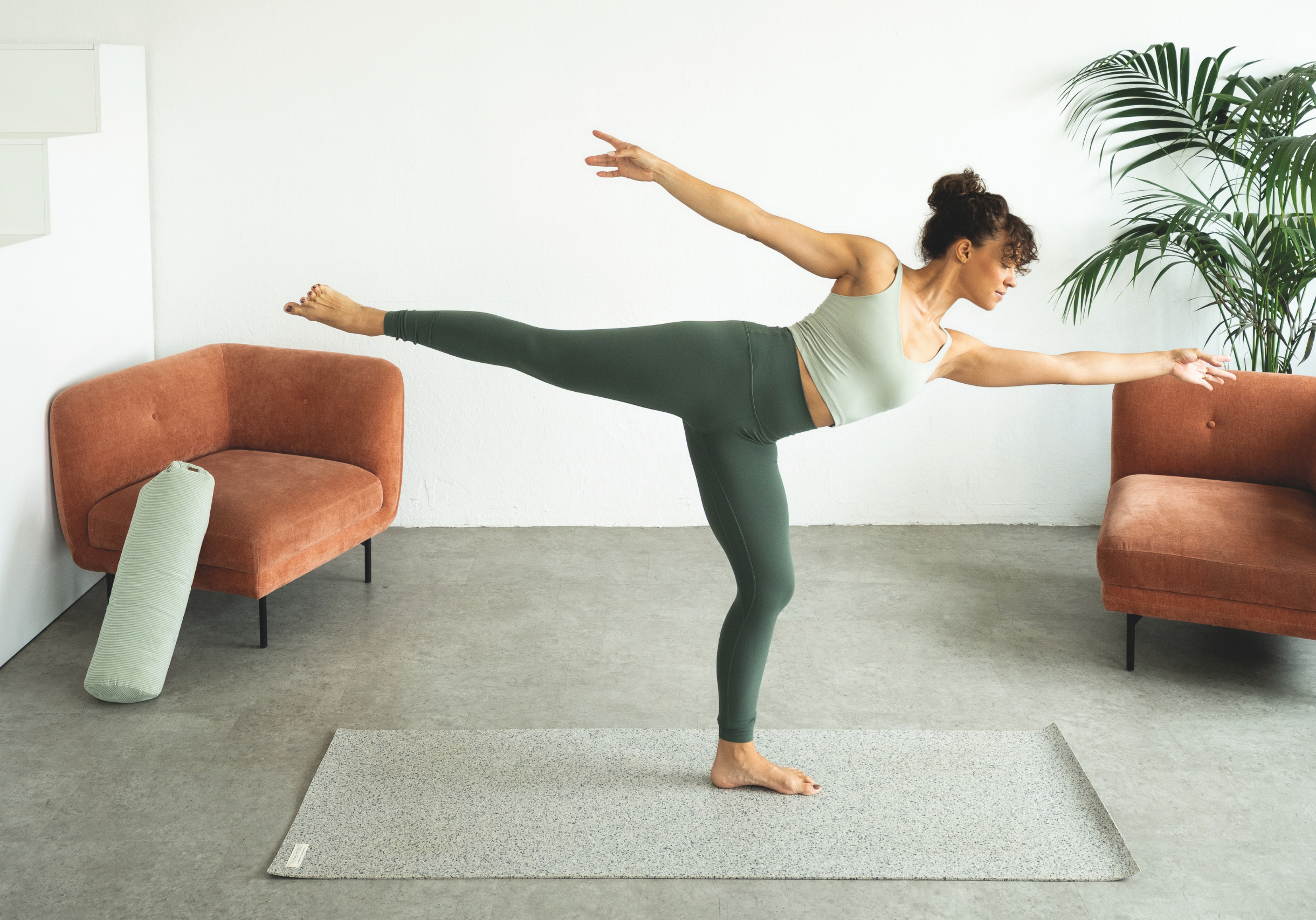
Pose 10: Flying Warrior (Ardha Chandrasana Variation)
From the lunge, shift your weight forward as you lift the back leg. Press down through the standing leg to open the hip and reach the bottom arm forward, lengthening the side body. Keep the knee of the standing leg slightly bent to help open the hip and steady your balance. As you fly forward, spread your fingers and toes to activate the limbs and create a feeling of lightness. Balancing poses like this are great to ground us in the present moment, and this variation adds a beautiful expansion in the upper body, too.
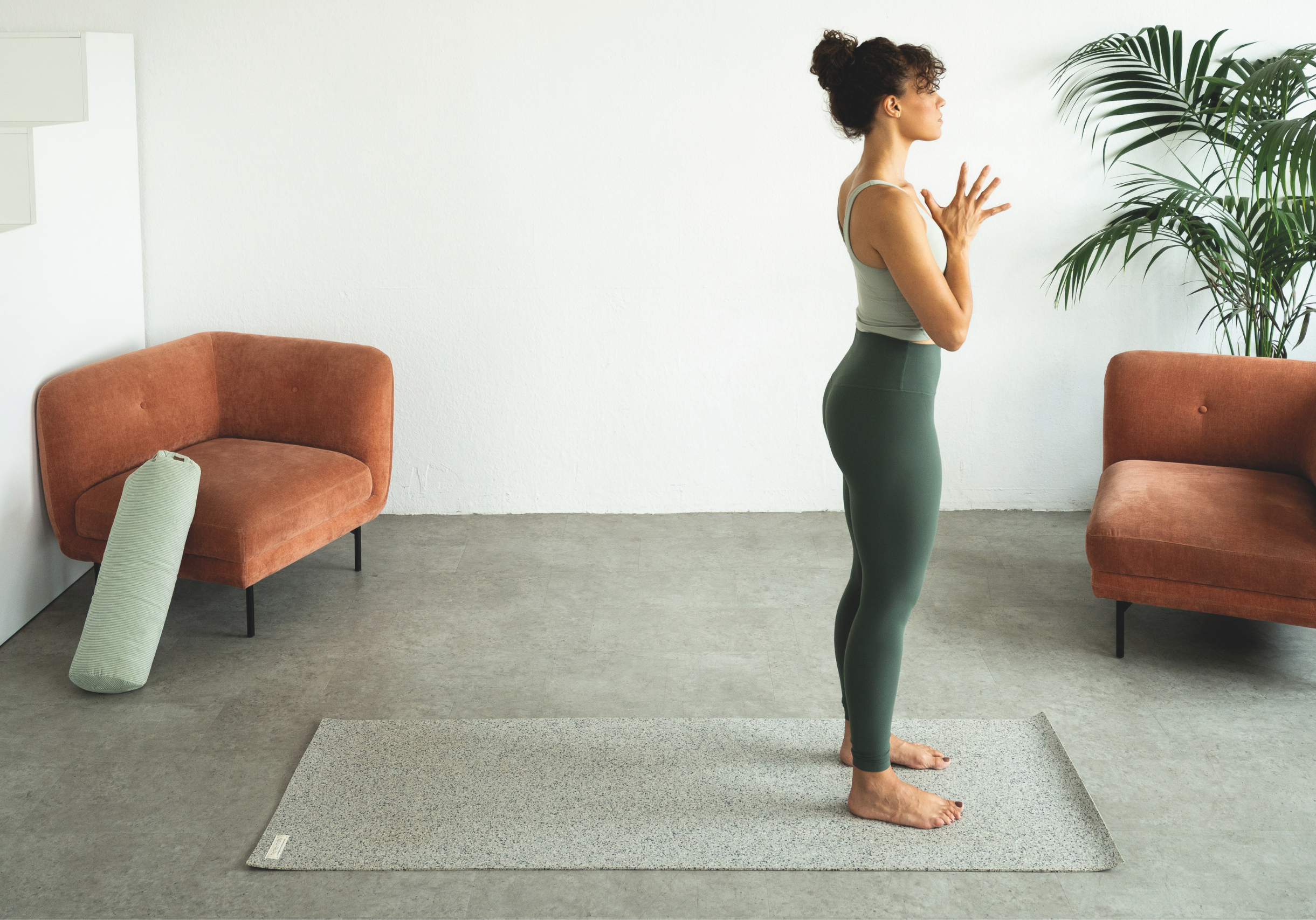
Pose 11: Samastiti
Return to a standing position with the hands in front of the heart. Take a breath here before repeating on the other side. You can also stay longer between rounds if that feels good. This is a moment to return to the steady flow of your breath, so you can embody it more fully each time you repeat. I also like to use this pause to refocus on my intention for the practice, so that each round takes me deeper into it.
ENHANCE YOUR PRACTICE WITH MUSIC
Once you’ve practiced a few times and feel comfortable with the individual poses and transitions, you can add music to your flow. Choose a song with a slow, steady beat, so you can use the rhythm to regulate the speed of your breath and movement. In Inside Flow, we use the first four beats (1-4) to inhale and expand, then the next four beats (5-8) to exhale and contract.
Over time and with practice, this becomes a beautiful anchor for your practice, helping you to create a symphony of movement and breath, and drop into the feeling of flow as soon as you step on the mat.
Born and raised in Essex and now based in Germany, Ami Norton is an Inside Yoga & Inside Flow Pro Teacher. She leads teacher trainings, workshops, and retreats across Europe and Asia and loves using the power of music to take the yoga practice to a deeper level. She now teaches regularly for the UK community too! Visit her website for more information: aminorton.yoga/en/insideflowuk


